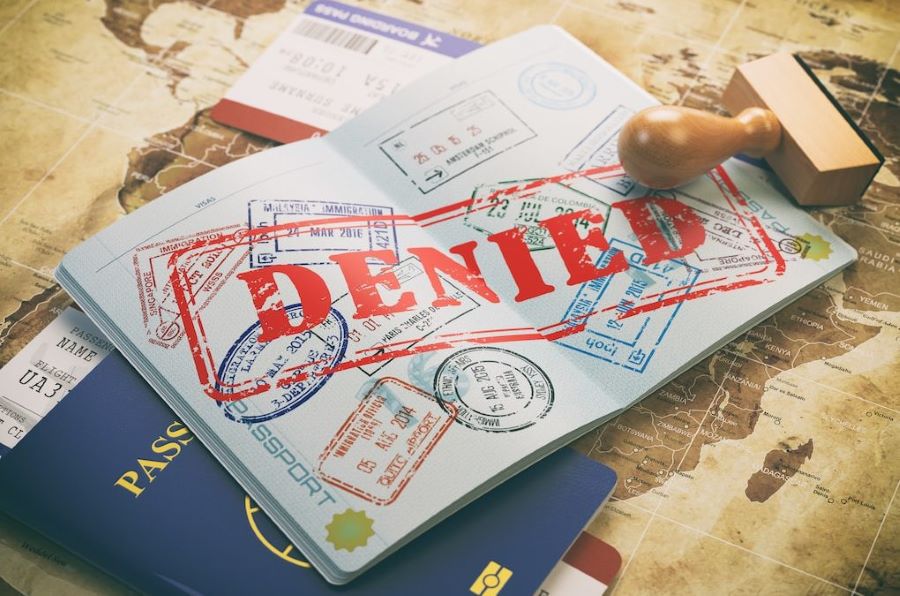Last Updated on February 6, 2025
There are two main intakes in Italy through which international students can begin their studies. The first one is the autumn term that starts either in middle of September or at the beginning of October and finishes by January. Then we have spring/summer period where schooling begins around mid-January or start of February and concludes in July.
Every term lasts 20 weeks, where teaching is given for 14 weeks and six weeks are set aside for tests. The procedure of application generally consumes around 3-6 months that includes the investigation of courses, satisfying eligibility standards, and getting ready for entrance examinations.
Overview of Intakes in Italy
| Intake | Starting Month | Ending Month | Programs Offered |
| September | Mid-September | January | Full range of undergraduate and postgraduate programs |
| February | February | July | Limited programs, mainly for advanced semesters |
The September intake is the most popular, accommodating a majority of students, while the February intake is less common but still available at select universities.
September Intake in Italy
The September intake is characterized by a vibrant atmosphere as new students arrive to begin their academic journeys. This period typically runs from mid-September to January, making it an ideal time for cultural immersion and networking.
Key Features of the September Intake
| Feature | Description |
| Cultural Events | Numerous festivals and events occur during this time, enhancing the student experience. |
| Visa Processing | Ample time for visa processing allows for smoother transitions. |
| Academic Resources | Access to libraries and support services from the start of the academic year. |
| Language Opportunities | Ideal for improving Italian language skills through daily interactions. |
Most universities open their doors for admissions during this period, making it crucial for prospective students to prepare early.
| Month | Information |
| January – February | Research Italian universities, courses, and application deadlines. Begin organizing the required documents. |
| February – March | Attempt English proficiency exams and any other exam as per the course requirement. |
| April – May | Review your essays, resume, and other documents and apply. |
| June – July | Accept the offer letter and pre-enroll for a student visa through the Universitaly portal. |
| August – September | Book flights, arrange accommodation, and finalize financial arrangements. |
February Intake in Italy
The February intake offers a secondary opportunity for students who may have missed the September deadline. This intake is generally less crowded and is suitable for specific programs or advanced studies.
Key Features of the February Intake
| Feature | Description |
| Limited Programs | Fewer courses are available compared to the September intake. |
| Ideal for Advanced Studies | Often caters to students continuing from previous semesters. |
| Less Competition | A smaller cohort may lead to more personalized attention from faculty. |
Students considering this option should carefully research which universities offer programs during this intake.
| Month | Information |
| June | Research Italian universities, courses, and application deadlines. Begin organizing the required documents. |
| September | Attempt English proficiency exams and any other exam as per the course requirement. |
| August – September | Review your essays, resume, and other documents and apply. |
| October – December | Accept the offer letter and pre-enroll for a student visa through the Universitaly portal. |
| January – February | Book flights, arrange accommodation, and finalize financial arrangements. |
Benefits of February Intake
The February intake in Italy, while less popular than the September intake, offers several unique advantages for students. Here are some key benefits to consider:
Key Benefits of the February Intake
| Benefit | Description |
| Less Competition | With fewer students enrolling, there is often less competition for spots in programs, allowing for a more personalized admission experience. |
| Focused Learning Environment | Smaller class sizes can lead to more direct interaction with faculty and tailored support, enhancing the learning experience. |
| Opportunity for Gap Year Students | Ideal for students who took a gap year or needed additional time to prepare for their studies, providing a second chance to start their academic journey. |
| Easier Visa Processing | With fewer applicants during this period, visa processing times may be quicker and less stressful. |
| Unique Program Offerings | Some universities offer specialized courses or programs that are only available during the February intake, catering to niche fields of study. |
| Cultural Adaptation | Starting in February allows students to experience Italy in a quieter season, making it easier to adapt to the new environment before the bustling summer months. |
How to Choose the Suitable Italian Intake
Selecting the right intake depends on various factors including program availability, personal timelines, and academic goals. Here are some considerations:
Factors to Consider
| Factor | Consideration |
| Program Availability | Check which programs are offered in each intake. |
| Application Deadlines | Be aware of specific deadlines for each intake. |
| Cultural Fit | Consider which intake aligns better with your cultural adaptation plans. |
| Visa Requirements | Ensure you can meet visa application timelines. |
Researching individual universities will provide clarity on which intake aligns best with your educational aspirations.
Availability of Programs in Italy
Italian universities offer a diverse array of programs across both intakes. However, the availability can vary significantly between institutions.
Program Offerings Overview
| University | September Intake Programs | February Intake Programs |
| University of Milan | Art, Science, Engineering | Limited Advanced Courses |
| University of Rome | Business, Humanities | Select Graduate Programs |
| Politecnico di Milano | Engineering, Design | Few Specialized Courses |
Students should consult university websites for detailed information on specific program offerings during each intake.
Availability of Programs in Italy
Italy boasts a rich array of academic programs across its universities, catering to diverse fields of study. The availability of programs varies significantly between the two main intakes—September and February—affecting students’ choices and opportunities.
Program Offerings Overview
| University | September Intake Programs | February Intake Programs |
| University of Bologna | Business, Engineering, Arts, Humanities | Limited Graduate Programs |
| Politecnico di Milano | Engineering, Design, Architecture | Few Specialized Courses |
| University of Florence | Fashion, Art, Architecture | Select Graduate Courses |
| Sapienza University of Rome | Social Sciences, Medicine | Limited Advanced Courses |
| University of Milan | Business Administration, Sciences | Some Postgraduate Options |
Popular Fields of Study
| Field of Study | Notable Universities |
| Engineering | Politecnico di Milano, Sapienza University |
| Business and Economics | Bocconi University, University of Bologna |
| Arts and Humanities | University of Florence, University of Padua |
| Fashion Design | Politecnico di Milano, Istituto Marangoni |
| Architecture | University of Venice, University of Bologna |
Key Considerations
- Language of Instruction: Most undergraduate programs are taught in Italian, while many graduate programs are available in English. Students should verify the language requirements for their chosen course.
- Application Deadlines: Each university has specific deadlines for applications. For the September intake, applications typically open in November and close by May or June. The February intake may have different timelines.
Main Intake (Fall): The autumn intake is the primary enrollment period, featuring a wide array of undergraduate and postgraduate programs across diverse disciplines. During this time, students can apply for popular fields such as:
- International Relations
- Business
- Engineering
- Fashion and Design
- Architecture
- Health Sciences
- Computer Science
- Tourism and Hospitality Management
Secondary Intake (Spring/Summer): This is a more limited enrollment period, available at select universities. While smaller in scale, it still offers various undergraduate and postgraduate programs. Key areas of study available during this intake typically include:
- Humanities
- Health Sciences
- Computer Science and Information Technology
- Individual courses
- Specialized programs
- Select research opportunities
Check other Intakes:
Conclusion
We hope this blog post has given clear answers for all your questions about studying in Italy and the opportunities available. Do you wish to study in Italy but are unsure where to begin with the application process? Fret not, and apply to study in Italy with Admissify! We ensure every part is consistent, clear, and well-made, just like what the committee looks for in their perfect candidate.
FAQs
How many intakes are there in Italy?
Italy typically offers two main intakes in Italy for international students: September and February. The September intake is the most popular, accommodating a wide range of programs, while the February intake is available for select courses and advanced studies.
Which intake is best for international students?
The September intake is generally considered the best option for most international students due to the broader range of programs available and the vibrant atmosphere as new students arrive. However, the February intake can be beneficial for those who may need more time to prepare or are looking for specific programs offered only during that period.
What are the eligibility requirements to study in Italy?
To study in Italy, undergraduate applicants must have completed 12 years of formal education with a minimum GPA of 3.0 on a 4.0 scale. For master’s programs, a related undergraduate degree with a minimum GPA of 7.5 on a 10-point scale is typically required. Additionally, proof of language proficiency (IELTS, TOEFL) may be necessary depending on the program’s language of instruction.
How do I apply for a study visa to Italy?
Non-EU students must apply for a student visa at their local Italian embassy or consulate. Required documents usually include an acceptance letter from an Italian university, proof of sufficient funds to cover tuition and living expenses, valid health insurance, and other relevant documents as specified by the consulate.
What types of programs are available in Italy?
Italian universities offer a diverse range of programs across various fields including arts, humanities, engineering, business, fashion design, and more. While many undergraduate programs are taught in Italian, numerous graduate programs are available in English, making it accessible for international students.
How can I find scholarships to study in Italy?
There are numerous scholarships available for international students wishing to study in Italy. These can be offered by the Italian government, universities, or private organizations. Students should explore options through university websites and scholarship portals to find suitable financial aid opportunities that match their academic profiles.

Simran is a seasoned content writer with a Master’s degree in Clinical Psychology. Her extensive expertise in research enables her to effectively guide students in their study abroad endeavors, particularly in navigating the complexities of choosing the right programs and universities. With a passion for education and mental health, Simran combines her writing skills and psychological insights to create informative content that empowers students to make informed decisions about their academic futures. Her commitment to helping others is evident in her work, as she strives to provide valuable resources for aspiring international students.




